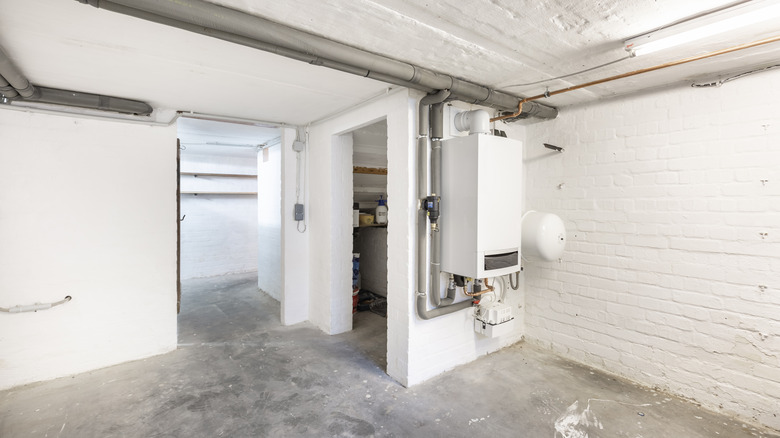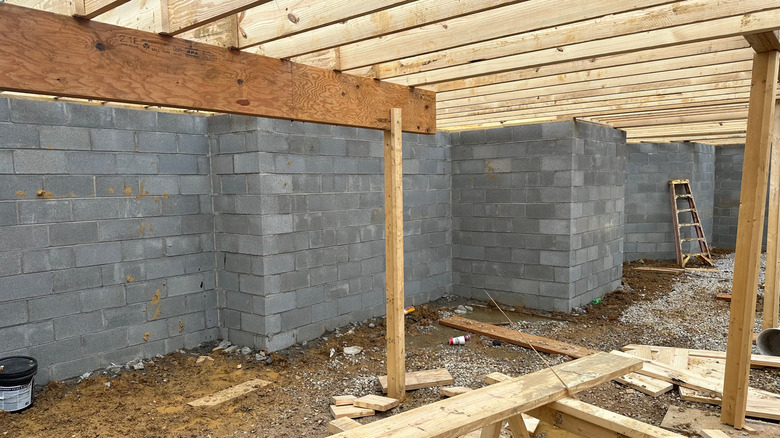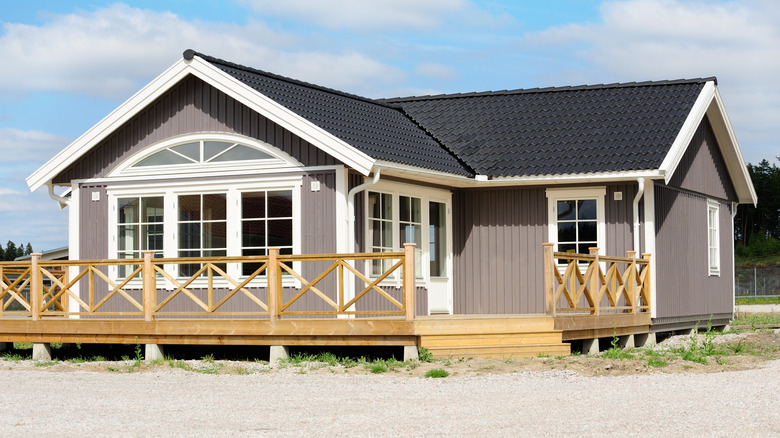Why Do Some Houses Have Basements And Others Don't? The Answer Is Simple
While some people take their basement for granted, others have never seen a basement in their life. But why aren't basements attached to every home? The primary factors that explain why some houses have basements and others don't have to do with the local water table, soil type, costs, and needs for underground structures.
The defining features of a basement — compared to something like a crawl space or a cellar — are size and versatility. Basements are spacious and tall enough to stand up in. They are fully enclosed from the elements and typically have at least a couple of windows, so they can be renovated and used as an extra living area. In order to construct such a space, builders have to dig into the ground around 8 feet or more. In some cases, building foundations are required to extend to nearly this depth anyway, making basements an easy addition. In other parts of the country, however, you would run into the water table, which marks how deep the water is under the surface of the soil, before ever getting that deep underground.
Additionally, if the soil is too sandy or rich in clay, or if the bedrock is too porous, building a basement isn't as feasible or safe as in more favorable soil types. Often, building codes reflect these conditions, making basements nearly obsolete in certain places and the opposite in others. Cost, house size, and design preferences also play a role, as well as how necessary it is for certain homeowners to have extra indoor space.
Where basements are most common and why
Basements are most common in the Midwest and the northeastern U.S. These regions have a deeper frost line, which marks how deeply the soil freezes in cold weather, and foundations are required to extend below that line to prevent damage. Since excavation is taking place either way, installing a basement is a practical choice that doesn't add much expense. The soil in these locations is also stable and dry enough to support a basement without risk of structural issues.
There are also practical benefits to having a basement in the Midwest or Northeast. For one, the underground space provides a safe place to go during tornadoes, earthquakes, or hurricanes, and it helps provide extra support to the upper levels of the house to prevent collapse during fires. The extra space can be put to use in a variety of ways, like storing seasonal items or as a recreational room. According to one 2023 House Digest survey, the best use of a finished basement is as a home theater — something the average home can't fit into its main rooms.
Indeed, finished basements are more common in smaller homes compared to homes with five or more bedrooms. They're also more common in homes that were built by homeowners, who often have significant storage needs, compared to homes built as rental properties.
Where in the U.S. it's best to not have a basement
Basements are least common in coastal areas, the South, and regions with mild climates. The frost line can be shallow in these areas, reaching just 0 inches in places like Florida and California. Therefore, digging a basement is an extra expense that may not be necessary. At $300 to $1,000 per square foot, plus the cost of permits and materials, that expense is a major consideration. Additionally, these regions often have weather that permits year-round outdoor activities, so extra indoor space may not feel useful enough to be worth it.
Building a basement is also more expensive and impractical in certain climates. A high water table is one major impediment. In addition to making it more difficult to excavate the soil, it could lead to risks for homeowners like groundwater seepage, flooding, and water damage. Even in less swampy areas, waterproofing is the most important thing for a basement, and in wetter climates that are prone to flooding, extensive waterproofing would be non-negotiable.
Soil type is another good reason to avoid basements. In much of the South, the soil is quite shallow, so basements would have to go into the bedrock as well. Building into rock can be risky and complicated. Southern bedrock is often porous limestone, which can lead to further groundwater issues as well as potential sinkholes or floods. Raised foundations are a more practical choice in these regions.


